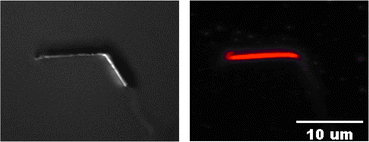Biological applications of high aspect ratio nanoparticles
Abstract
This review describes recent advances in nanomaterials fabrication that have led to the synthesis of high aspect ratio particles on nanometer length scales. The elongated structure of these materials often result in inherent chemical, electrical, magnetic, and optical anisotropy that can be exploited for interactions with cells and biomolecules in fundamentally new ways. We briefly describe the synthetic procedures that have been developed to fabricate

- This article is part of the themed collection: New developments in nanomaterials

 Please wait while we load your content...
Please wait while we load your content...